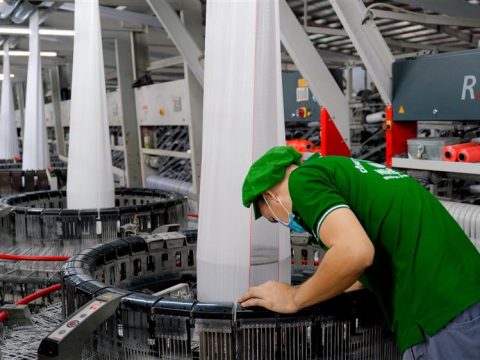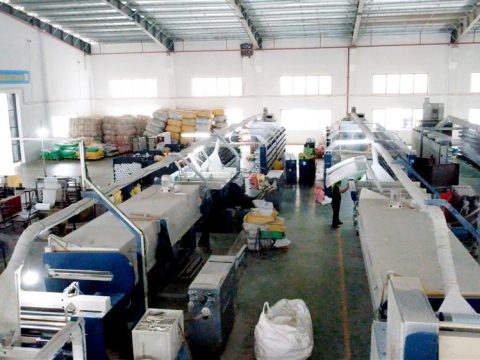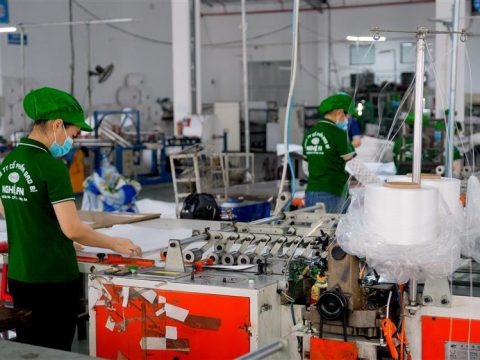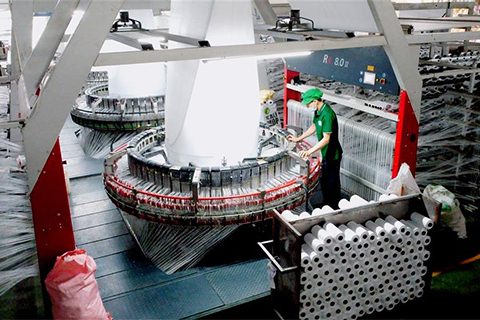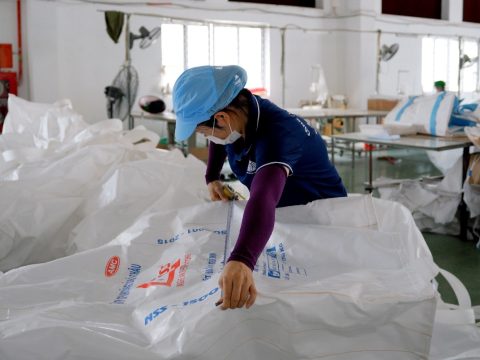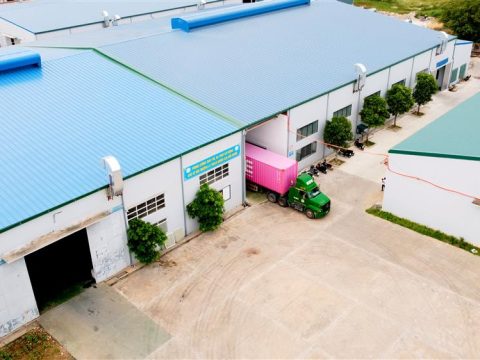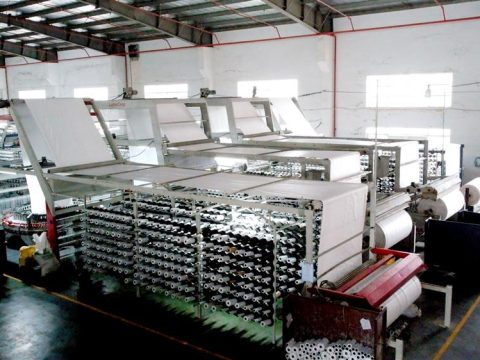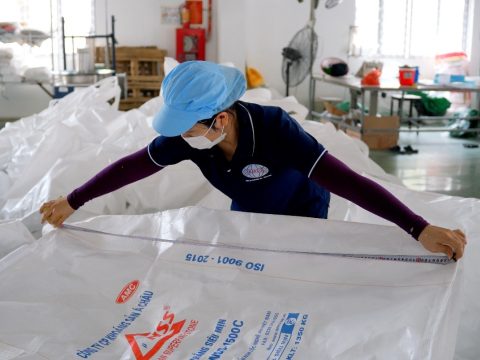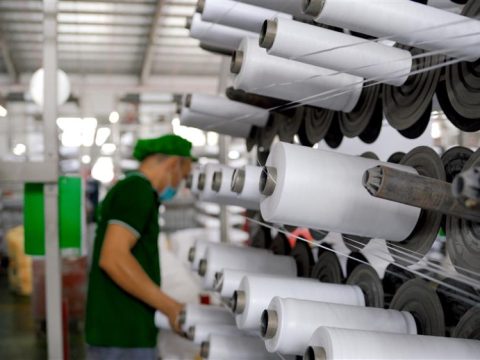How to choose printing ink for uncoated PP woven bags
PP woven bags are mainly divided into non-laminated woven bags and laminated woven bags. The two main printing methods are flexo printing and gravure printing, respectively. In this article, we will discuss how to choose printing ink for non-laminated PP woven bags using flexo printing, which is most commonly used in non-laminated woven bags.
How to choose printing ink for non-laminated PP woven bags
FLEXOGRAPHIC PRINTED PP WOVEN BAGS
In flexo printing, the pattern must first be engraved on a plastic plate, and then the plate must be glued to the circular roller of the printing machine. The operation of the circular roller and the transportation of the PP WOVEN FABRIC ROLL are carried out at the same time. The ink-dyed plastic plate contacts the woven bag by the rotation of the circular roller, and the ink on the pattern must be pressed onto the woven fabric to form a single color pattern. For multi-color patterns, multiple plastic plates need to be operated in sequence.
The existing flexo printing inks include alcohol-soluble solvent inks and water-based inks. Among them, water-based inks account for the majority. Its advantages are no environmental pollution, no impact on human health, non-flammable, good safety, stable ink performance, bright color, no plate corrosion, simple operation, low cost, and good adhesion after reflection, strong water resistance and quick drying. Because of the above characteristics, water-based woven bag inks are especially suitable for printing and using food, medicine, cosmetics and other packaging and decoration printing products with strict hygiene conditions.
What should be noted when using water-based inks?
1. Fineness.
Fineness is a physical index to measure the particle size of pigment fillers in ink. It is directly controlled by the ink manufacturer. Users can generally understand it. Its size cannot be changed during use. The fineness of woven bag water-based ink is generally below 20 um. The instrument for measuring fineness is a fineness scraper.
2.Viscosity
Viscosity is one of the main indicators of water-based ink. The viscosity value will directly affect the quality of the printed material, so the viscosity of water-based ink must be strictly controlled in flexo printing. The viscosity of water-based ink is generally controlled within the range of 30~60 seconds/25℃. If the viscosity is too high and the leveling performance is poor, it will affect the printing applicability of water-based ink, which is easy to cause plate dirt, plate sticking and other phenomena. If the viscosity is too low, it will affect the ability of the carrier to drive the pigment. The adhesion of water-based ink comes from the bonding material. The adhesion of water-based ink to acrylic resin and water as the formulation will be relatively high. This is because the water-based ink with acrylic resin dries quickly, has good flexibility, good water resistance and adhesion of more than 90%. The pH value of the acrylic water-based ink needs to be adjusted during use, so it will have an ammonia smell. Of course, after a period of time, with the evaporation of ammonia, there will be no smell.
3. Dry.
Dry is one of the most important indicators of water-based ink, because the drying speed and viscosity can directly reflect the quality of the printed material. The operator must have a detailed understanding of the drying principle to reasonably allocate the drying time of water-based ink according to different products or substrates. While ensuring that the water-based ink dries well, we must also consider moderate viscosity or stable pH value.
The drying process of water-based ink includes evaporation, absorption and reactive solidification. After the water-based ink print is completely dry, it has strong water resistance and anti-friction. Drying too quickly, the ink layer surface is easy to peel off, and the water-based ink is easy to dry on the print, resulting in dirty prints and unclear pattern outlines. It is best to clean the anilox roll or ink bucket while the machine is off, and stir the ink bucket frequently during short-term shutdowns to avoid surface scale. If the drying process is too slow, the printed material is easy to stick. At this time, check whether the pH value is correct and adjust by adding stabilizer or ethanol according to the pH value to make the water-based ink dry faster.

